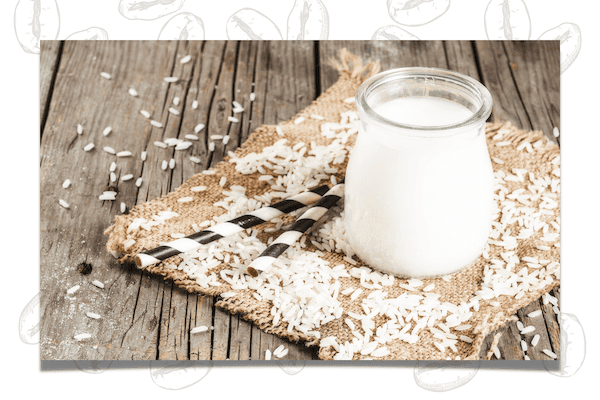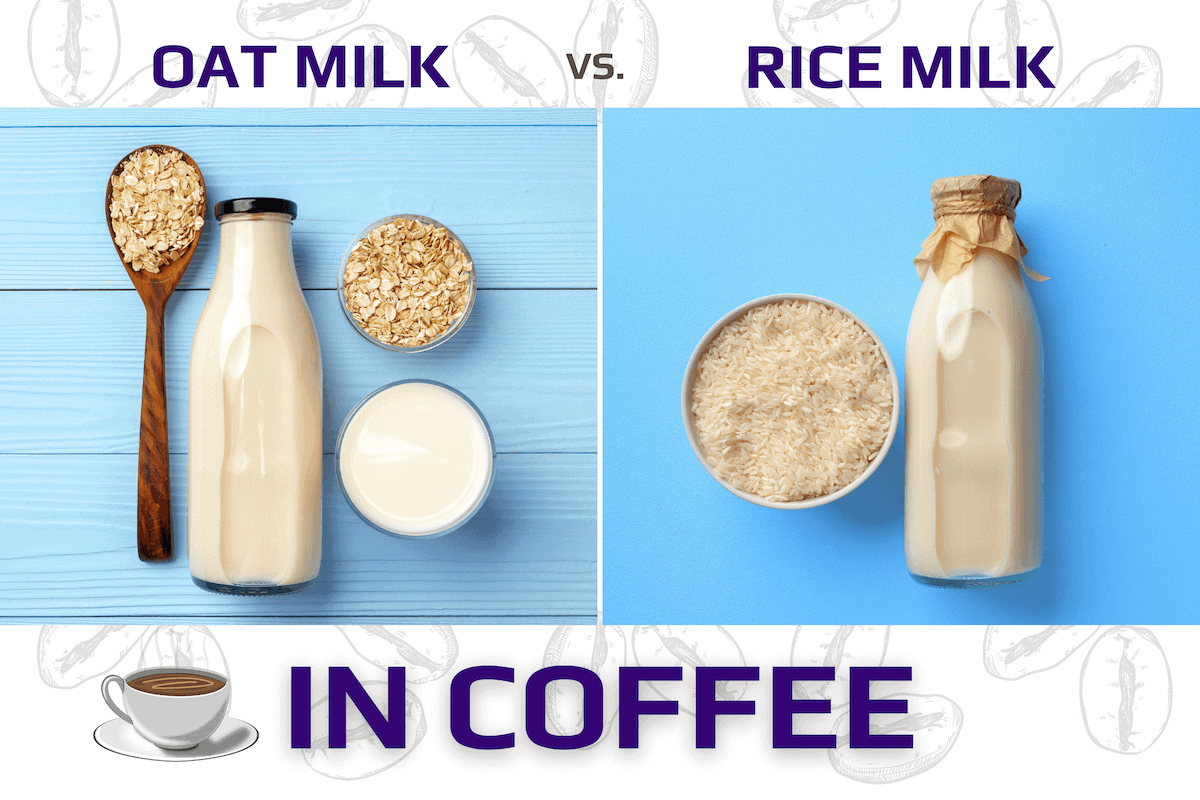Plant-based milk alternatives are popular for those who cannot or choose not to consume dairy. While soy, almond, and coconut milk have been go-to choices for a while, oat milk and rice milk have recently gained popularity as dairy alternatives. This article will compare oat and rice milk, specifically how well they pair with coffee, and explore their taste, nutritional value, ingredients, and environmental impact.
Taste in Coffee: Oat Milk vs. Rice Milk
The taste is one of the most critical factors in choosing a plant-based milk alternative. Regarding coffee, both oat milk and rice milk have distinct flavors.
Oat milk has a creamy texture and a slightly sweet taste that pairs well with coffee. The creaminess of oat milk can add a velvety texture to coffee drinks like lattes and cappuccinos. Additionally, oat milk doesn’t have a strong aftertaste, which makes it a popular choice for those who don’t like the nutty flavor of almond milk.
Rice milk, on the other hand, has a much thinner texture and a slightly sweet taste. It doesn’t have the creamy texture of oat milk, which may not be ideal for coffee drinks that require a frothy texture, like lattes or cappuccinos. Additionally, rice milk has a distinct aftertaste that may not appeal to everyone.
How Does Oat Milk vs. Rice Milk Perform When Heated And Frothed
Regarding heating and frothing plant-based milk alternatives for coffee, oat milk is a better option than rice milk. Oat milk can be heated and frothed without separating or curdling, making it an excellent option for latte art and cappuccinos. Rice milk, on the other hand, can separate when heated or frothed, resulting in a disappointing texture and latte art.

Nutritional Value: Oat Milk vs. Rice Milk
Both oat milk and rice milk are relatively low in fat and calories compared to dairy milk. However, oat milk has a higher nutritional value than rice milk.
Oat milk is high in fiber, protein, and essential vitamins and minerals like calcium, vitamin D, and vitamin B12. Additionally, some oat milk brands are fortified with nutrients like iron and omega-3 fatty acids, making it a great choice for those concerned about meeting their nutritional needs.
Rice milk, on the other hand, is not as nutritionally dense as oat milk. It is relatively low in protein and has little to no fiber. While some brands of rice milk are fortified with additional vitamins and minerals, it’s important to read the labels and ensure that you’re getting enough of what you need.
Nutrition Comparison: Oat Milk vs. Rice Milk
| Per 1 Cup Serving | (Oatly) Oat Milk | (Dream) Rice Milk |
|---|---|---|
| Calories | 120 | 130 |
| Fat | 5g | 2.5g |
| Carbs | 16g | 27g |
| Total Sugar | 7g | 12g |
| Protein | 3g | 0g |
| Dietary Fiber | 2g | 0g |
Popularity: Oat Milk vs. Rice Milk
According to a report by SPINS, oat milk sales grew by 50.5% in the United States between 2021 and 2022, while rice milk sales dropped by 11.7%. This trend has continued, with oat milk becoming increasingly popular in coffee shops and grocery stores nationwide.
One of the reasons for oat milk’s popularity is its taste and texture. Oat milk has a creamy and slightly sweet taste that many people find enjoyable. It also has a texture similar to dairy milk, making it a good alternative for those looking for a milk substitute that can be used in a variety of ways, from coffee to baking. In comparison, rice milk has a thinner texture and a less distinct flavor, which many people find less appealing in coffee drinks.

Oat Milk vs. Rice Milk In Coffee Shops
\As more people choose to avoid dairy, coffee shops have quickly offered plant-based milk alternatives. Oat milk has become a favorite among baristas and coffee shop customers alike, as it froths well and complements the taste of coffee. Some coffee shops have even made the switch to exclusively using oat milk in their drinks.
Rice milk, on the other hand, is not as popular in coffee shops. It has a thin consistency and does not froth as well as oat milk, making it less suitable for lattes and other coffee drinks. However, rice milk can still be a good option for those who prefer a milder taste in their coffee or those who are allergic to other types of plant-based milks.
Overall, while both oat milk and rice milk are good alternatives to dairy milk, oat milk has emerged as the more popular choice in coffee shops. Its creamy texture and sweet taste make it a versatile option for a variety of drinks and dishes, while rice milk’s thinner consistency makes it better suited for specific dietary needs.
Ingredients: Oat Milk vs. Rice Milk
The ingredients in oat milk and rice milk are relatively simple, but there are some differences. Oat milk is made by blending oats with water, salt, and sometimes additional sweeteners or thickeners like carrageenan or xanthan gum. Rice milk is made by blending rice with water and sometimes additional sweeteners and thickeners.
While both oat and rice milk are relatively simple, it’s important to read the labels and be aware of any potential allergens or additives that may not be ideal for your diet.

Environmental Impact: Oat Milk vs. Rice Milk
Regarding the environmental impact of oat milk vs. rice milk, oat milk is the clear winner. Oat milk is made from oats, which require much less water and land to grow than rice. Additionally, oat milk production has a lower carbon footprint than rice milk production. The production of oat milk produces fewer greenhouse gas emissions than the production of rice milk, making it a more sustainable choice.
Conversely, rice requires a significant amount of water to grow, making it a more water-intensive crop than oats. Rice farming also has a higher environmental impact due to the large amounts of methane gas produced while growing and processing rice. Methane gas is a potent greenhouse gas that contributes significantly to global warming.
Final Thoughts
Both oat milk and rice milk are viable alternatives to dairy milk in coffee. Oat milk has a creamier texture and a higher nutritional value than rice milk, making it a great choice for those looking for a milk alternative with added health benefits. Oat milk is also easier to froth and heat without separating, making it ideal for lattes and cappuccinos.
Recent Posts
As the world becomes more health-conscious, people are exploring alternative milk options to replace traditional dairy milk. Among these options, oat milk and coconut milk have become increasingly...


